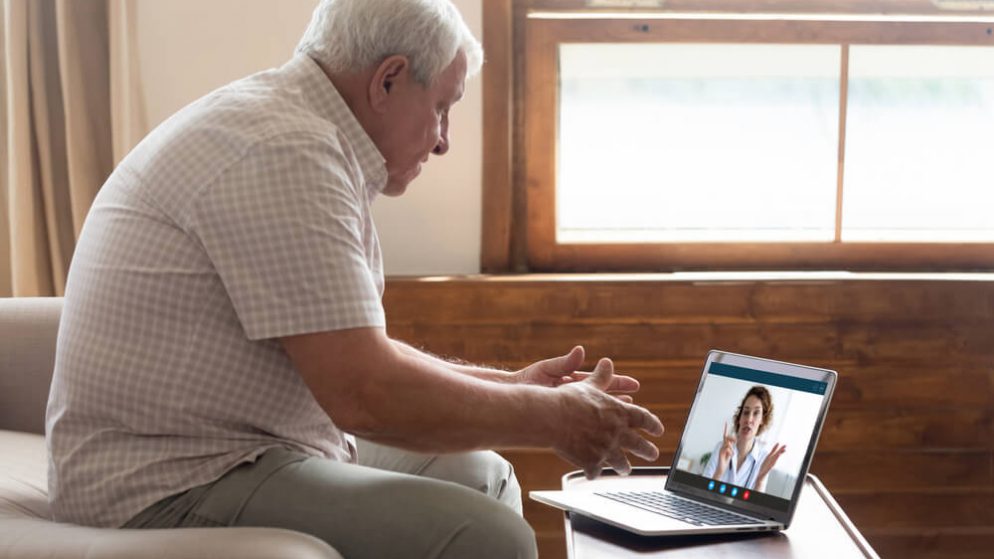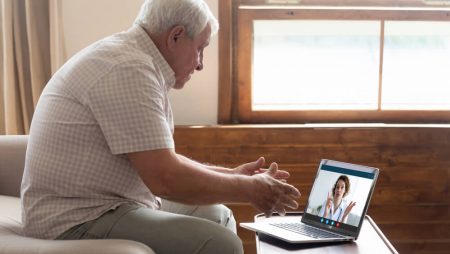



Get new exclusive access to healthcare business reports & breaking news




When people think of medical alert systems, they typically only think of a singular button to press for help in the case of a fall. But the industry has evolved and there are so many more capabilities available to help support the independent lifestyle of the medical alert device user and alleviate the burden of care from the child of an aging parent. One of the key industry leaders in this space is medical alert device company, LifeStation.
LifeStation grew from a business founded over 40 years ago on a mission to monitor safety across a range of categories including security, fire, and burglary. The medical alert device company branched off on its own in 2005, and today LifeStation is one of the largest medical alert system providers in the United States. As a family and privately owned company that does not outsource their emergency monitoring network, LifeStation has the ability to operate in the best interest of their customers – improving the lives of seniors and their caregivers while taking a long-term view on the development of services to best meet their lifestyle needs.
As the medical alert industry progresses, using technology to help seniors live fulfilling lives is at the core of innovation. With the healthcare industry experiencing a continual technology-driven rebirth, modern advancements are in place to help seniors age comfortably and transition into the next period of their life independently, while offering support to their caregivers. Ultimately, the best technology in healthcare will improve patient (or user) outcomes behind the scenes – leveraging and empowering them to be safe, healthy, and secure.
Senior isolation and COVID-19
As our society becomes increasingly embedded in technology, it is easy to recognize why and how the coronavirus pandemic impacted the tech sector. For upwards of a year, our most vulnerable and hard-hit population – seniors – were in a state of isolation. Social distancing meant virtual family reunions, trips to the grocery store and pharmacy were replaced by online apps or early mornings designated to seniors only, doctors’ appointments shifted to telehealth zoom meetings, and time spent socializing with similar-aged community members ground to a strict halt. This lifestyle shift for seniors created an epidemic of loneliness, with social isolation among adults carrying significant health and emotional risks. The CDC found that social isolation in adults aged 50 and over is associated with a decrease in health, including a 50% increased risk of dementia, and poor social relationships are associated with a 29% increased risk of heart disease. If the pandemic taught us anything, it is that connectedness and a sense of purpose are imperative for physical and mental well-being.
Senior isolation at the height of the pandemic arguably separated seniors into two technology adept groups, as CNN health coins the divide between seniors who experienced technology “haves” and technology “have-nots.” Active agers in the group of “haves” were, and still are, granted more access to virtual social interactions and telehealth services. They also have more opportunities to secure essential supplies online, whereas active agers in the “have-nots” group are at greater risk of social isolation, forgoing medical care and being without food or other necessary items for prolonged periods of times. Through partnerships with Medicaid and Medicare plans, medical alert systems are increasingly accessible to seniors and offer affordable, easy-to-use technology to enhance their care. It is clear to see how technology became more important than ever in 2020, a year defined by a pandemic that significantly limited social interaction and connection, and in doing so, affected seniors in more ways than what meets
the eye. During this time of uncertainty and isolation, technology proved to be a continual tool in active agers’ daily lives by supporting those who care for them most: their caregivers.
LifeStation’s Positive Aging Quotient
We know that being a caregiver to an aging loved one is complex, and while heavily focused on the needs of the aging family member or friend they are supporting, there comes a point where an aging loved one’s need for support intersects with a caregiver’s own well-being. This is why LifeStation released its first-ever Positive Aging Quotient, which examines the impacts of caregiving responsibilities on everyday life from work to relationships to mental health.
The survey reinforced the need for technology use with seniors and caregivers, but that aging adults are hesitant to adapt. From the survey, 48% of current caregivers acknowledge that the aging adult they care for could use some way of connecting to others, and nearly two-thirds (60%) feel a buffer like a video monitoring system or medical alert device between them and the aging adult they provide care for would be helpful for care management. These results lead to a conversation around the ongoing caregiver crisis in America and shed light on how technology can help fill the gap in caregiver supply as aging seniors continue to grow in volume.
So, why does technology resistance among seniors exist and how can we empower those we love to utilize technology as a tool to maintain their independence?
Technology as an empowerment tool
Technology empowers seniors to continue living autonomously, subsequently improving their mental and physical health. Independence grants seniors a familiar sense of purpose and individuality – something they have been used to their entire life. While the natural progression of aging can make independent living more difficult, with the help of medical alert devices, it does not have to be impossible.
There comes a time in many people’s lives where they are faced with a hard decision: do you risk leaving a parent unsupervised at home, or do you place your loved one in a nursing home? We know seniors value their independence – in fact, they crave a lifestyle where they are not watched under a lens and viewed as frail. Not only can long term care facilities take away from this sense of independence, but they can become large financial burdens to families providing these funds. Technological advancements within the home allow seniors to avoid the costs associated with long-term care facilities and grant normalcy and comfort. With more aging parents choosing to stay in their homes for as long as they can, technology is available to help them age in place.
Another benefit of medical alert device technology is the possible reduction found in hospital re-admissions, as reports show that 12% of hospital readmissions are potentially avoidable. While the causes of readmission can vary widely, hospital care is costly and avoiding re-admission can save millions of dollars. Hospital readmission also comes with a sense of defeat for seniors – reducing these numbers provides stability and safeguards emotions. The Center for Medicare Advocacy states four factors “most strongly associated with potentially preventable readmissions” as being:
Use of technology, like medical alert devices or telehealth appointments, can address these gaps in hospital readmissions by providing proper care, increasing communication, and improving coordination among staff and carees.
Modern technology in place for seniors
Medical alert technology in its own right is evolving – no longer just for falls, these devices are tapping into the most modern technology available to offer better, faster, innovative offerings to support those aging and the caregivers monitoring them. Medical alert companies, such as LifeStation, take traditional medical alert devices a step further by developing innovative platforms that transform the lives of seniors to help them live safely and independently, all while offering comfort and confidence.
Innovations such as LifeStation’s Alexa Integration allows caregivers to monitor a loved one’s location at a distance with an Amazon Echo or smart phone, while Find My Loved One enables caregivers to locate their loved one wearing mobile medical alert devices with the ease of a text message. LifeStation also provides support even when there’s no emergency – the CareAssist Concierge Service can contact an expanded call list that includes meal delivery, the user’s pharmacy, and transportation resources. Through a partnership with Uber Health, LifeStation care specialists are available to book rides to key appointments and assist in transporting users wherever they may need to go and LifeStation’s Wellness Checks provide proactive calls to users to provide a friendly voice, conduct critical assessment needs, deliver resources, and improve their physical and emotional well-being.
Depending on the user, their lifestyle, and health situation, different medical alert devices are available to support their goal of autonomy and the family’s need to monitor the aging family member’s health and safety.
Technology in tandem with aging
The U.S. Census Bureau reported that the nation’s 65+ population has grown rapidly since 2010 as Baby Boomers continue to age up, and the Population Reference Bureau reports that the number of Americans ages 65 and older is projected to nearly double from 52 million in 2018 to 95 million by 2060. As this demographic continues to grow, it is important we know how to care for them and provide resources to improve their quality of life.
As the U.S. grapples with the expanding elderly population, the country is also struggling to keep up with the demand for professional caregivers. With an increasing number of Baby Boomers opting to stay in their homes as they age, the strain being placed on the home-care industry is causing family members to step up and fill a larger role in the caregiving needs of their aging loved one. America is a nation that does not place great emphasis on the importance of taking care of elders, an aspect of our culture that needs to rapidly shift as these caregiving discrepancies continue to be revealed. This is where the benefits of evolving uses for technology rise to the forefront.
The use of technology for seniors can and should be set in place to lend a helping hand to the aging population as they begin to, or continue to, plan for the next phase of life. Whether seeking support for themselves or for an aging loved one, medical alert technology can help provide caregivers peace of mind in knowing that if there’s an emergency (big or small), there’s a system in place to get immediate care. Technology is no longer just for the younger generations – more and more aging seniors are benefiting in more ways than one from these easy-to-use devices, reclaiming what it means to age and empowering independence for years to come.
About LifeStation
LifeStation is one of the leading providers of medical alert monitoring and telehealth technology services in the United States. LifeStation’s mission is to leverage innovative technology and services to transform the lives of seniors and help them live safely and independently. Of equal importance is the well-being of caregivers and providing them with the peace of mind they need. Learn more about LifeStation by calling 800-446-3300.